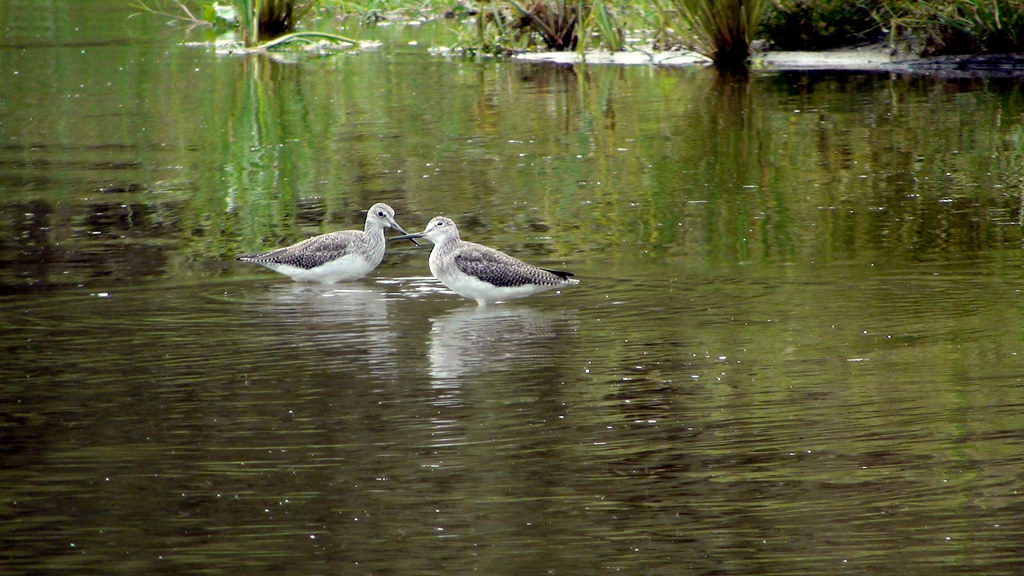Wednesday October 5, 2022

Squawking alarm calls around the marsh, a stocky yellow-legged bird flies in circles as it warns others of potential danger. This bird is known as a Greater Yellowlegs (Tringa melanoleuca), a medium to large shorebird often found in wetland habitats. Although they look extremely similar in appearance to their smaller cousin, the lesser yellowlegs (Tringa flavipes), this species is actually most closely related to the common greenshank (Tringa nebularia) and the spotted redshank (Tringa erythropus). These birds are in a group known as shanks, connected by their shared trait of brightly colored legs and feet. They are known by the colorful colloquial names of yelper, tattler, and telltale, all of which refer to their noisy alarm calls. Our biologists and field technicians will often come across yellowlegs probing for invertebrates along shallow edges of the riverbank or on the sandbars within the river. Although invertebrates make up the majority of their diet, these birds also eat small fish. Their long legs allow them to wade deeper into the water than most shorebirds, giving them more opportunities to find food.
The greater yellowleg spends its winters along the coastal and southern states of the United States and as far south as South America. The mild winters in these regions provide a steady supply of food for the overwintering shorebirds that are preparing to migrate into the boreal forests of Canada and Alaska. Once spring arrives, the greater yellowlegs migrate northward to establish their breeding territory in buggy marshes. Despite being common and widespread, the greater yellowlegs are one of the least studied shorebird species, since they nest in remote high-latitude regions in mosquito-filled bogs and marshes. We do know that they build fairly simple nests by making depressions in moss and lining them with leaves or lichen. Greater yellowlegs have one brood per year with three to four eggs, which are incubated for about 23 days. The young are precocial when hatched, meaning they are fully feathered with open eyes, and are able to feed themselves and leave the nest within an hour of hatching. Both parents are diligent protectors of their young, loudly chasing off any potential predators. Incredibly, the young are able to fly by about 20 days after hatching, in preparation for their first migration south. Keep an eye out for these beautiful but noisy birds around wetland areas in California’s Central Valley starting around October.
